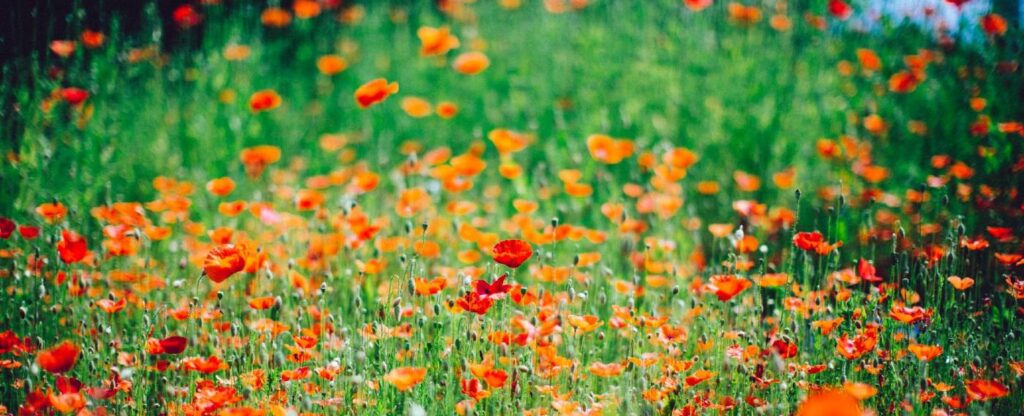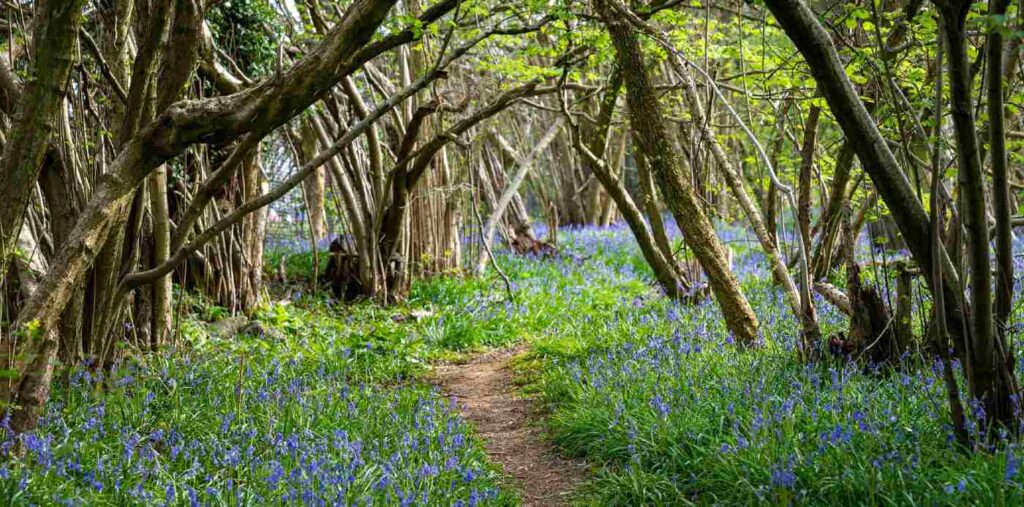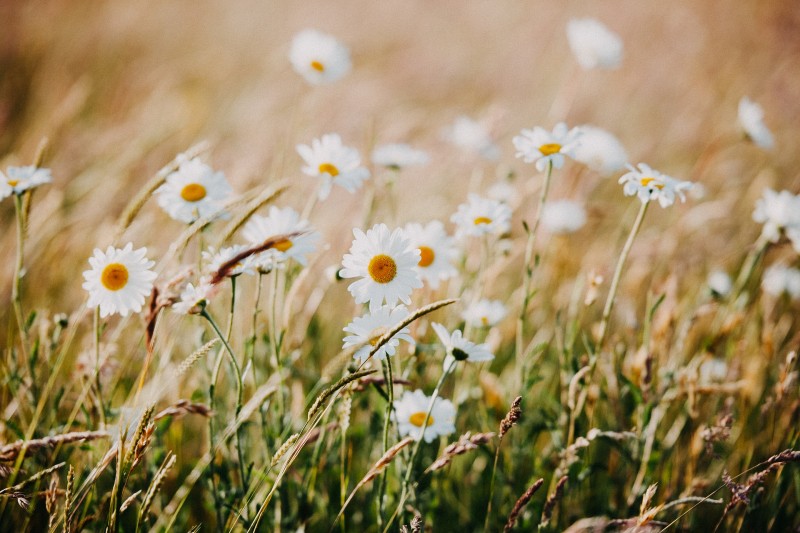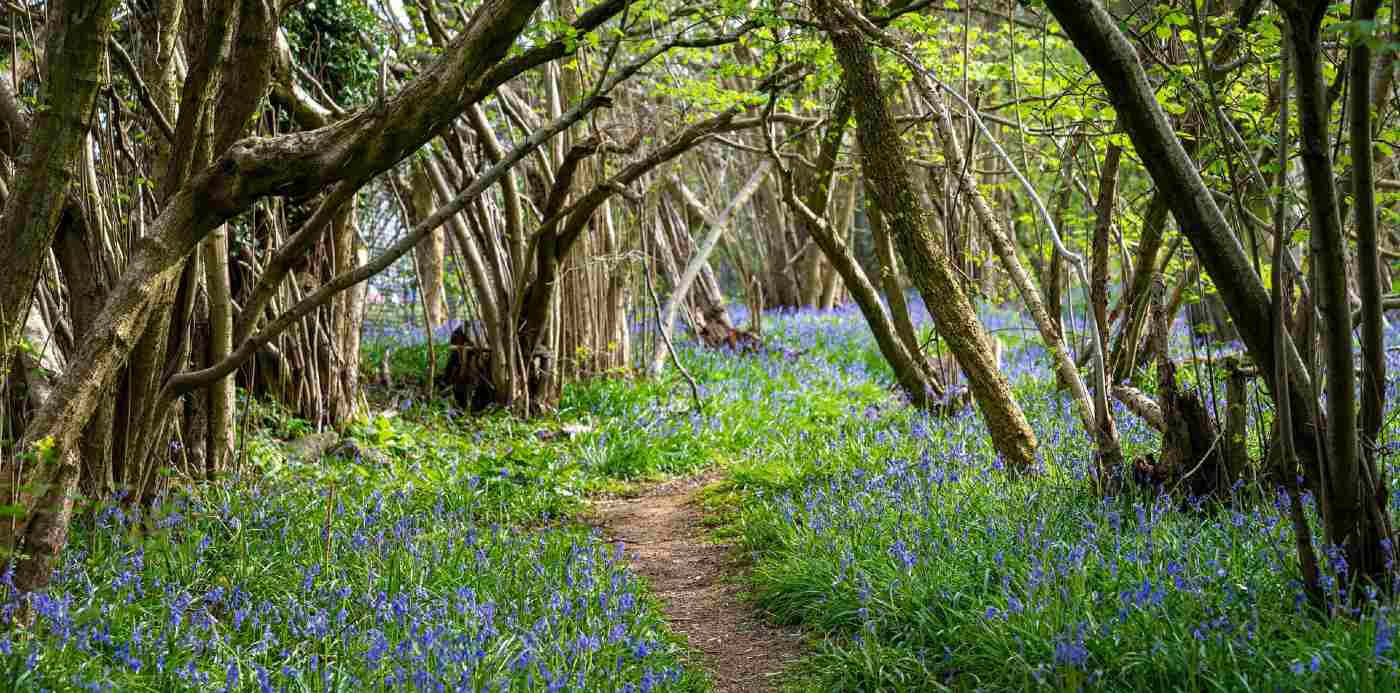When Prince Charles of Great Britain read Plantlife UK‘s annual 2012 report, he was astonished to find that England had lost 97% of all its natural wildflower meadowland.

He then organized the Coronation Meadows Initiative, which helped build 60 wildflower meadows—one for each year since his mother, the Queen, assumed the throne.
But not only did 60 become 90—totaling over 1,000 acres—but converting old animal paddocks and lawns into wildflower meadowland became the fashion for national gardening and landscaping. Environmental charities and societies are utilizing these trends to promote pollinator restoration, carbon sequestering, and all other manners of ecological benefits.
In Ipswich on the UK’s southeastern coast, a valley running down to a quaint river was turned into landfill in the 1960s and loaded up with trash. Capped and left to sit, in 2017 Landseer Park was turned into a 50-acre wildflower and pollinator sanctuary by a charity called Buglife. It’s now home to rare bee species and butterflies such as the dark green fritillary.
Local reporter Ross Bentley describes the meadows in lovingly nationalistic detail when he wrote for the East Anglian Times.
“Such is the subtle majesty of our native wildflowers that their beauty only becomes truly apparent close up: the lilac of field scabious; the flamboyant blue spikes of viper’s-bugloss; the yellow, honey-scented lady’s bedstraw—the names conjuring up images of their usage back centuries ago when people understood better the properties of our natural flora.”
“When the sun shines on England”

For Forbes Adam, strolling through the old barley field which has been newly meadowed is like stepping onto “25-acres of hope.”
Her plan was to restore an ancient kind of habitat across much of the North Atlantic called “woodmeadows,” which are exactly what they sound like—a mosaic of trees, grasses, and flowers that marry the creatures of the meadow with those of the forest, and which still can be found across Scandinavia today.
So far, Adam has recorded more than 1,000 different species of invertebrate, according to an interview she gave with The Guardian, including 34 bee species and 26 butterflies.
She now runs the Woodmeadow Trust, a charity that helps advise landowners on creating this sort of iconic English habitat everywhere, from Yorkshire in the north to London in the south. That aspiration has a slogan: “a woodmeadow in every parish.”
Over the next 22 years, the larger Plantlife UK charity is hoping to capitalize on the wildflower appreciation trend with a campaign to restore 360,000 acres of wildflower meadows (120k hectares) across the nation.
They practice natural seeding techniques, which involves harvesting seeds at different times from local strains of plant species and seeding areas with this stock rather than buying wildflower seeds from a store.

The difference is that the naturally collected seeds will create plants which grow and produce nectar and flowers at different rates, meaning the season during which pollinators can find food, and humans can stroll among the beautiful petals, will be much longer.
MORE: UK Debuts Geothermal Plant Using Heat From the Earth to Power 10,000 Homes
Plant Life’s Magnificent Meadows website contains all kinds of resources for making your own wildflower meadow, and how to get involved in the movement to save the English meadow, an important piece of ecological identity, as Alice Duer Miller divulges in The White Cliffs:
When the sun shines on England, shafts of light,
Fall on far towers and hills and dark old trees,
And hedge-bound meadows of a green as bright—
As bright as is the blue of tropic seas.
SPREAD a SEED of Hope—Share This Story With Pals…




















